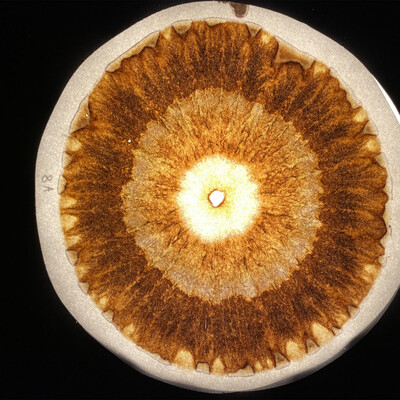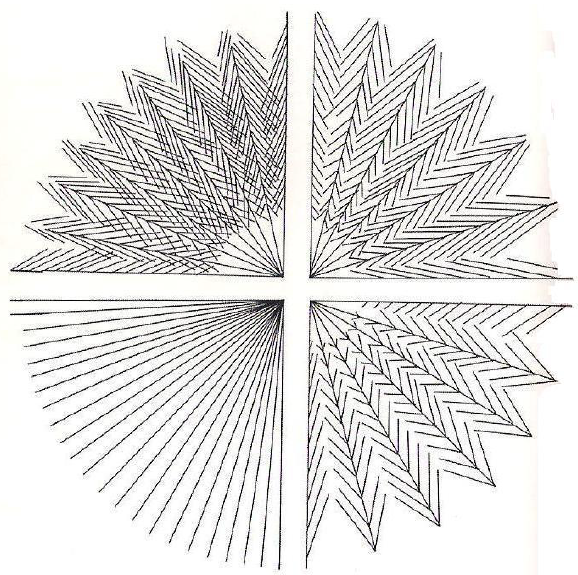
Soil chromatography: compost and vineyard
The method of soil chromatography can be applied to all kind of soils and substrates. So the team was curious to compare the soil chromatographies of the test plots with other soil types from compost and vineyards. Compost, by definition, has a very high nutrient content, while the soil profile and field analysis showed that the vineyard has a very sandy and biologically inactive soil.
The compost chroma exhibits bold colors and complex patterns. The channels are clearly visible from the inner core to the outer zone. This is indicative of a healthy soil. The central zone is very large and almost white. Not surprisingly, this represents a high nitrogen content.
Soil chromatography of a compost sample. The sample clearly shows composted food residues such as nut and egg shells. Source: Chair of Being Alive, 2021.
The vineyard chroma shows a distinctly different pattern. It is very dark and shows at first glance that the soil is dead. There are no channels and no peaks, so the zones are separated. There are no nutrients in the central zone, which is a bit worrying if grapes are to grow in this soil. The soil in this type of land is more of a substrate that absorbs inputs than a living organism. It would be interesting to repeat the chroma of the vineyard immediately after the application of fertilizers.





